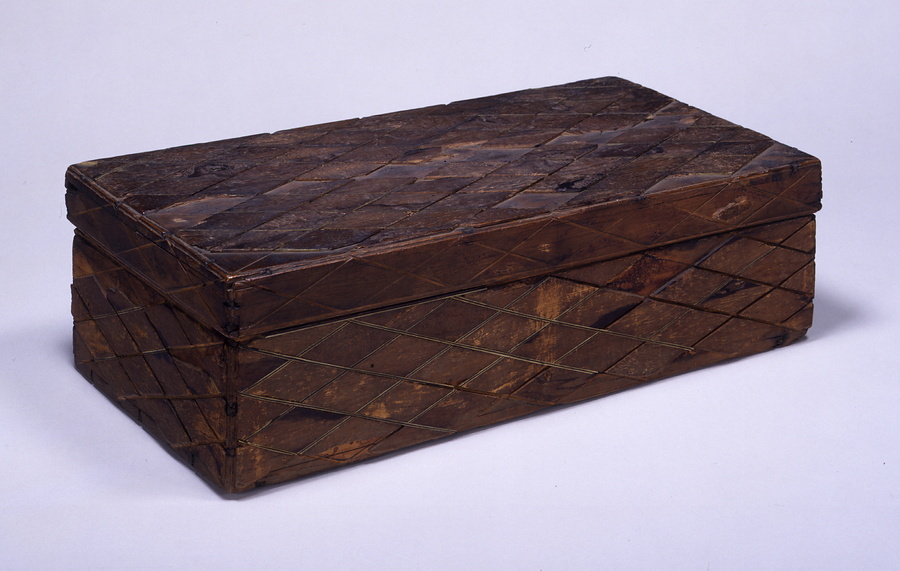木画経箱
もくがきょうばこ
概要
木画とは、紫檀(したん)、黒檀(こくたん)、沈香(じんこう)、象牙などで作った板を組み合わせて文様を描く技法です。その源流は古代エジプトやペルシャのモザイク技術にあり、東アジアにもたらされて中国の隋から唐代にかけて発達しました。
この木画経箱は、表面全体に菱形と三角形に切った沈香の薄板を貼り詰め、合わせ目に黒檀を挟みこんだ象牙を嵌めて格子文様を表しています。沈香とは中国南部から南の地域に産出する香木です。象牙や黒檀もまた日本にはないものです。現在でも貴重な材料ですが、8世紀の日本にあっては現代の感覚よりもはるかに貴重なものであったことでしょう。そうした材料の色合いや肌の美しさを単純な文様構成が一層引き立てています。なお、この箱は8巻からなる法華経が納められていました。


